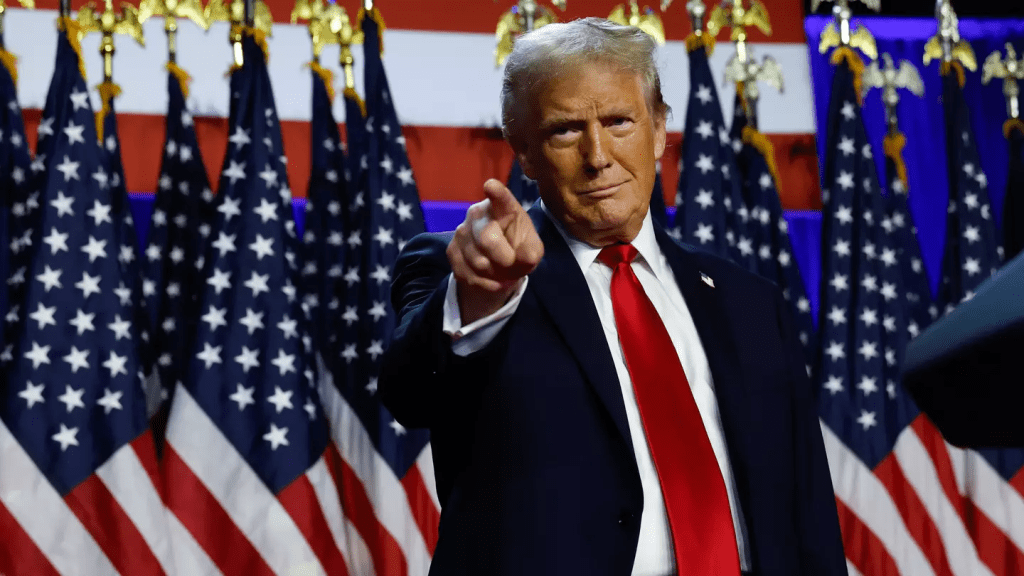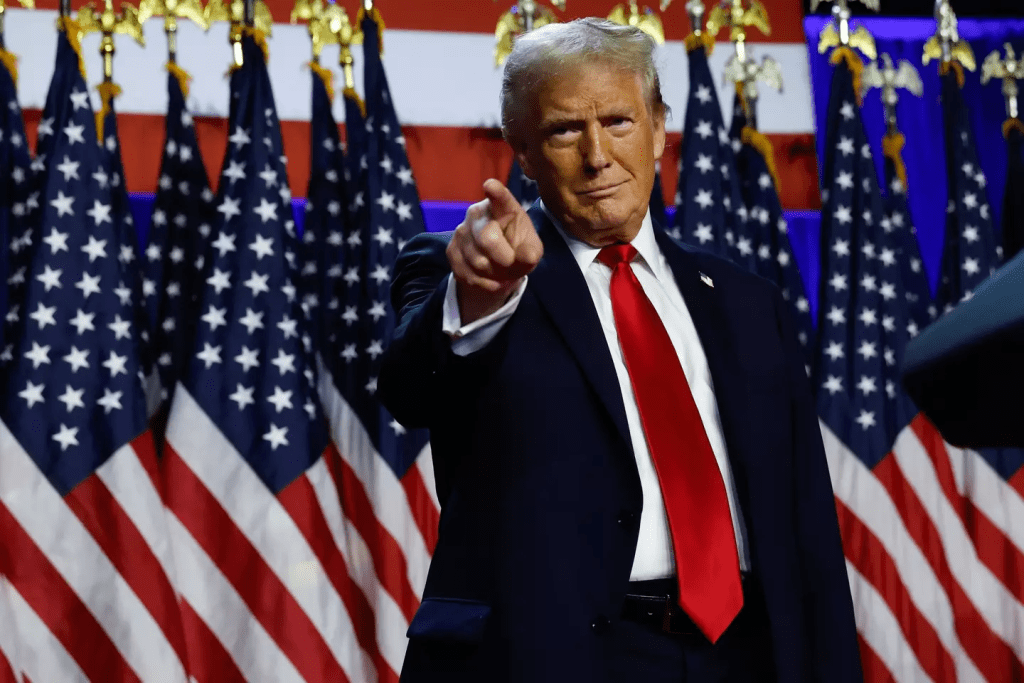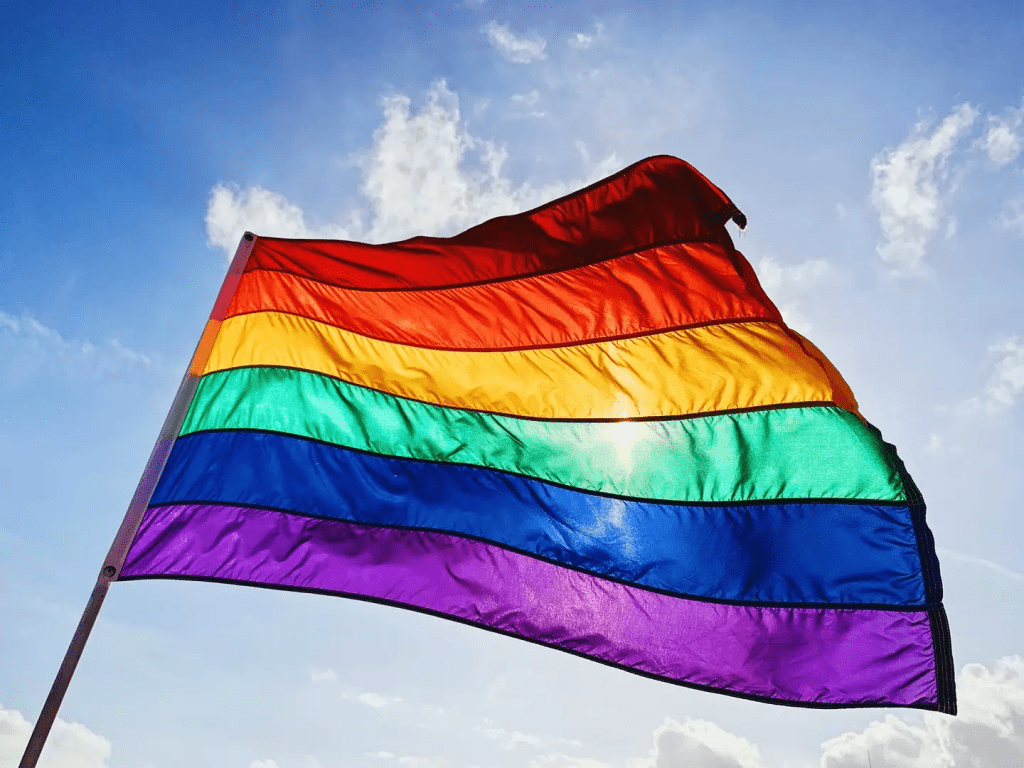A Controversial Start to Trump’s Presidency
In a swift and polarizing move, President Donald Trump has reportedly banned the display of Pride and Black Lives Matter (BLM) flags at U.S. embassies and overseas missions. This decision, part of a broader “one flag policy,” has sparked widespread debate across the nation and beyond.
The directive, issued just days after Trump’s return to the Oval Office, adds to a series of executive orders that have already reshaped federal policies on immigration, gender, and international relations. While the administration argues the policy promotes unity and respect for the U.S. flag, critics see it as a divisive measure targeting marginalized communities.

What Does the New Policy Entail?
The “one flag policy” restricts the display of any flags other than the United States flag at U.S. facilities, both domestically and abroad, with only three exceptions:
- The Prisoner of War (POW) flag
- The Missing in Action (MIA) flag
- The Hostage of Wrongful Detainee flag
Secretary of State Marco Rubio, who announced the policy, stated, “The U.S. flag is a powerful symbol of pride, and it is fitting and respectful that only the U.S. flag be flown or displayed at U.S. facilities.”
The directive applies to embassies, consulates, and all federal properties, prohibiting the display of Pride and BLM flags, which had previously been flown during events like Pride Month and Black History Month.
A Look at the History of These Flags
Both the Pride and Black Lives Matter flags have become powerful symbols of inclusion and advocacy, representing movements that champion the rights of LGBTQ+ individuals and racial equality, respectively.
- Pride Flags: Frequently displayed during Pride Month, the rainbow flag symbolizes LGBTQ+ rights and acceptance. U.S. embassies, such as those in Moscow and Nassau, have prominently flown the flag to mark events like the International Day Against Homophobia, Transphobia, and Biphobia.
- Black Lives Matter Flags: Raised in solidarity with racial justice movements, the BLM flag was flown at several U.S. embassies, including in Brazil and Trinidad and Tobago, to honor Black History Month and other related occasions.
These displays were seen by many as a gesture of solidarity and inclusion, underscoring the U.S.’s commitment to diversity and equality on the global stage.
The Reactions: Support and Backlash
The decision to ban these flags has drawn sharp reactions from various corners of society.
Supporters of the Policy:
Advocates of the “one flag policy” argue that it restores the primacy of the U.S. flag as a unifying symbol. They believe that embassies and government buildings should remain neutral, focusing solely on representing the nation as a whole rather than specific movements or causes.
Critics of the Policy:
Opponents view the ban as a regressive and exclusionary move. Kevin Jennings, CEO of Lambda Legal, called the decision “petty and mean-spirited,” emphasizing that displaying these flags is a simple yet powerful way to show people that they matter.
On social media, users expressed frustration, with some accusing the administration of violating free expression and others warning of potential human rights implications. One user wrote, “This is a human rights violation. The UN will deal with it,” while another commented, “Seems like the government is banning free expression.”
The Potential Consequences for Employees
The policy comes with strict enforcement measures. State Department employees who defy the directive by flying prohibited flags could face severe penalties, including:
- Termination of employment or contracts
- Reassignment to their home agency
- Other disciplinary actions
While the exact consequences remain unclear, the administration’s firm stance suggests that breaches will not be taken lightly.

Why Is This Decision So Polarizing?
The ban touches on broader debates about identity, representation, and freedom of expression in government spaces.
- Representation Matters: Advocates argue that flying the Pride and BLM flags sends a message of support to marginalized communities. By removing these symbols, critics claim the administration risks alienating these groups and undermining the U.S.’s commitment to diversity.
- Neutrality vs. Advocacy: Proponents of the policy maintain that government facilities should remain neutral, representing all citizens equally. However, detractors counter that neutrality often disguises a refusal to address systemic inequities.
- Global Implications: As embassies serve as representatives of American values abroad, the ban may signal a retreat from progressive stances on social justice, potentially affecting the U.S.’s reputation on the international stage.
Past Flag Displays: A Brief Overview
Before this policy, U.S. embassies frequently used flag displays to promote inclusivity and solidarity.
- In 2021, the U.S. Embassy in Nassau raised the Pride flag for the entire month of June.
- In February 2022, the U.S. Embassy in Brazil displayed the BLM flag to commemorate Black History Month.
- The Latvian Embassy in Riga flew the Pride flag in May 2023 to recognize the International Day Against Homophobia, Transphobia, and Biphobia.
These actions were hailed by activists as significant gestures, showcasing the U.S.’s commitment to human rights and equality. The new policy marks a stark departure from these practices.

The Broader Context: Trump’s Executive Orders
The flag ban is one of 25 executive orders Trump signed during his first week back in office. Other notable directives include:
- TikTok Ban Deferred: The president temporarily reversed the TikTok ban, citing the need for a thorough review of national security concerns.
- Withdrawal from Global Agreements: Trump withdrew the U.S. from the Paris Climate Agreement and the World Health Organization, signaling a return to his “America First” agenda.
- Gender Policy Change: A separate order declared that there are only two genders, restricting how gender identity is recognized in federal policies.
These actions reflect Trump’s commitment to reshaping federal policies in line with his administration’s priorities.
Conclusion: A Policy That Reflects Broader Divisions
The ban on Pride and Black Lives Matter flags is a highly symbolic decision that highlights the deep divisions within American society. For supporters, it’s a move toward unity under the U.S. flag. For critics, it’s an exclusionary policy that marginalizes communities and diminishes the nation’s commitment to diversity and equality.
As the debate continues, this policy will likely remain a lightning rod for discussions about representation, governance, and the role of symbolism in public spaces. Whether it unifies or divides, the directive undeniably shapes the narrative of Trump’s second term and its impact on the nation’s identity at home and abroad.